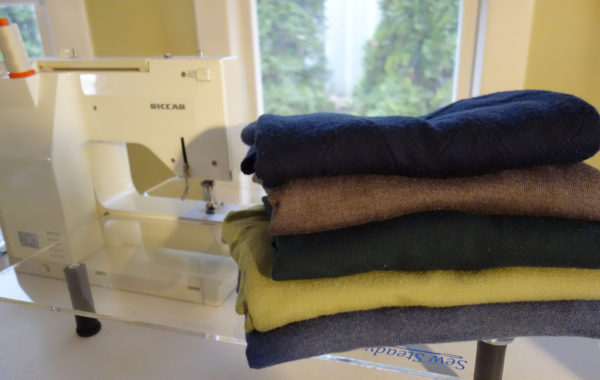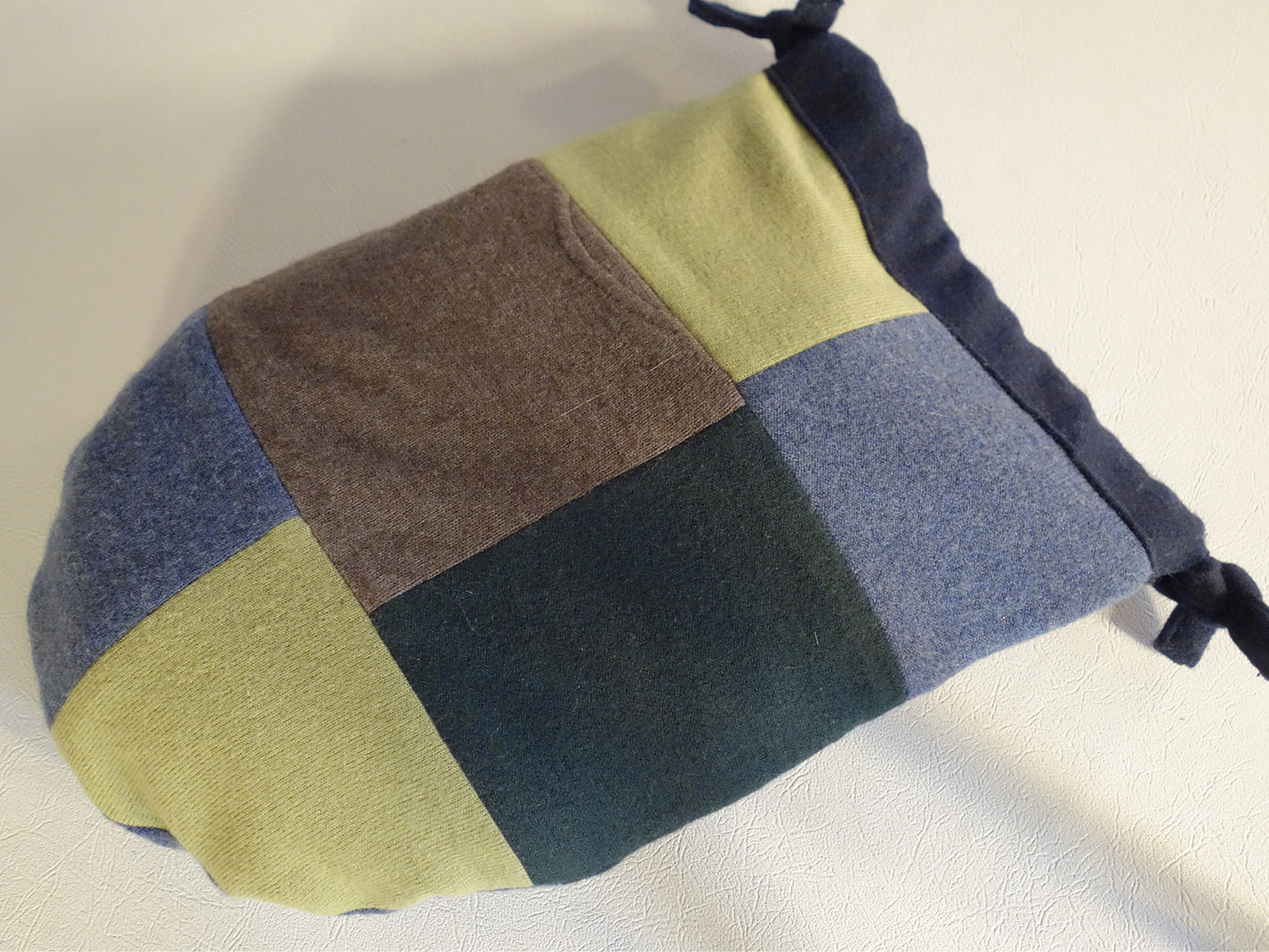By Patricia Belyea
SEATTLE WA Last January I visited Bryan Whitehead in the small town of Fujino, Japan, on a clear day. The weather made for a spectacular view of Mount Fuji on the drive from the village train station to Bryan’s silk farmhouse. It also made for bitterly cold temperatures.
Bryan, Canadian by birth, has spent more than twenty years immersing himself in the traditions of Japanese textiles. His home, the size of a small motel, brims with spinning machines, looms, an indigo vat, dyeing screens and more—which he shares with lucky folks who can secure spaces in his coveted Japanese Textile Workshops.


With all of its wonderful delights, Bryan’s 150-year-old home has no central heating. For my one-night stay, Bryan sent me upstairs with two Japanese hot water bottles (yutanpo) filled with boiling water and encased in folksy wool covers. The hot water bottles looked like oversized, galvanized steel canteens. The covers, patchwork in style, were made with two layers of wool.
In the morning, I raved to Bryan about how much I loved his hot water bottles! Oh, he said, you slept with Brad Pitt and George Clooney. Haha!

Back in Tokyo I walked over a mile to find a hardware store in my hotel's neighborhood. None of my pantomiming helped the shop staff understand that I wanted hot water bottles. As soon I drew a little picture, a trip to the storage room upstairs produced an armload of my heart’s desire.

Once home in Seattle, I headed to my local Goodwill store and bought five men’s merino sweaters. I washed the sweaters twice with very hot water and felted them more using the hottest setting on my dryer. Then I deconstructed the clothing into fabric and made a lined wool patchwork bag for each of my four darlings.





Why is a Japanese hot water bottle so fantastic? Because it’s still hot in the morning! A far cry from a rubber hot water bottle than seems to cool in less than an hour.
A WORD OF WARNING: Do not use a Japanese hot water bottle without a cover. If you do, you or your loved one could be easily burned by the transfer of heat through the metal sides. So please, be careful.
To Make Your Own Bag for a Japanese Hot Water Bottle
Draw around the ovoid shape of the hot water bottle—using freezer paper or other pattern paper
Add 1” all around your drawing
Make the sides of the pattern go straight up from the widest point
Make the top of the pattern go straight across, 2 3/4" above the top height of the bottle
Cut out your paper pattern Collect four to five merino wool sweaters for the outer bag
Felt the sweaters by washing in hot water and drying in a hot dryer
To up-cycle the sweaters, turn them inside-out and cut out the seams, cuffs and collars
Cut the felted wool into random squares and sew together with 1/4" seams until you have two patchwork pieces that are larger than the pattern Using the paper pattern twice, cut out the patchwork for the two sides of the outer bag With right sides together, sew the sides and curved bottom of the outer bag using a 1/4" seam allowance. Keep the top open
Use the same paper pattern, cut out the two sides of an inner bag using a medium-weight wool—this time making the inner bag sides 2 1/2" taller than the outer bag sides
Zig zag stitch all around the two fabric pieces for the inner bag With right sides together, sew the sides and curved bottom of the inner bag using a 1/4" seam allowance—stopping 2 1/2" from the top. Keep the top open Turn the inner bag inside-out and slip into the outer bag
Turn down the top edge of the inner bag by 1/4" and roll over to front of the outer bag
Sew around the top of the double bag, 1 5/8" down from the top edge to form a channel for the pull cords. Also stop stitching twice, at the side seams, to leave openings for the pull cords.
Make two pull cords out strips of the medium-weight wool that are 19” long and 2" wide
For each pull cord, press the wool strips in half lengthwise, fold the two long edges into the center of the strip, and stitch together the open edges and along the ends. Snap a safety pin through one end of a pull cord and work it through the fabric channel from one side to the other, leaving ends hanging out on both sides Repeat, working the second pull cord through the fabric channel on the second side. Tie the ends of the two pull cords together on each side, using square knots Tada! You just made a cover for a Japanese hot water bottle. Stay warm, my friend!
To Buy a Yutanpo
I bought my four hot water bottles in Tokyo for the equivalent of $16.50 USD each and gave up precious space in my luggage to bring them home.
The same Japanese hot water bottles are available on Amazon with free shipping. Save on airfare!
Here is the link to +buy on Amazon
The painting of Seattle’s Magnolia Park on the headboard of my bed is by American artist Gary Faigin.









